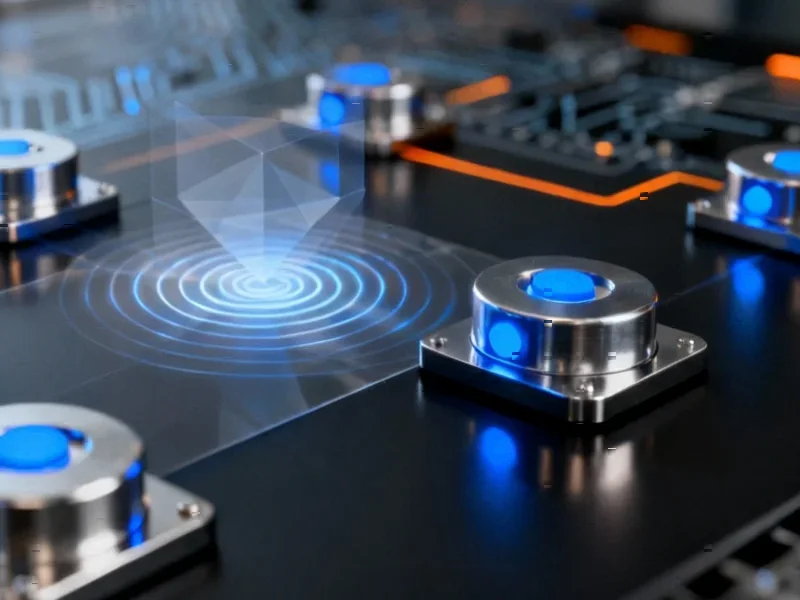Algorithm Performance in Medical Imaging
Researchers have conducted a comprehensive evaluation of optimization algorithms for medical image segmentation, with sources indicating significant differences in performance across 18 tested methods. According to reports published in Scientific Reports, the study specifically assessed algorithms for segmenting CT scans from COVID-19 patients, with analysts suggesting implications for real-time clinical applications.
Table of Contents
Methodology and Experimental Design
The research utilized chest CT images from the Cancer Imaging Archive featuring COVID-19-positive patients from rural populations, the report states. Sources indicate that 18 patient records were randomly selected from approximately 105 available cases, with image resolutions of 762×762 pixels and slice thickness of 3.14 mm. The experimental framework involved preprocessing steps including histogram equalization, normalization, and noise reduction filters before implementing multilevel thresholding segmentation.
Analysts suggest that all algorithms were evaluated using Otsu’s method for maximizing between-class variance, with the search space spanning intensity ranges from 0 to 255. The report states that each algorithm was implemented using standard parameter configurations from their original publications, with population sizes ranging from 30 to 50 and iterations capped at 1,000 to ensure fair comparison.
Performance Metrics and Key Findings
According to the evaluation, segmentation accuracy was measured using multiple metrics including Dice Coefficient, Jaccard Index, sensitivity, specificity, precision, and F1-score. The report states that computational efficiency was assessed through computation time, convergence rate, and memory usage, with each algorithm executed 25 times to account for stochastic variability.
Sources indicate that Differential Evolution (DE), Grey Wolf Optimizer (GWO), and Harris Hawks Optimization (HHO) achieved the highest segmentation accuracy with Dice Coefficients of 0.88. These nature-inspired algorithms reportedly demonstrated strong performance in handling the complexity of medical images while maintaining segmentation quality comparable to traditional Otsu methods., according to additional coverage
Analysts suggest that Particle Swarm Optimization (PSO) and Artificial Bee Colony (ABC) emerged as the most computationally efficient, completing segmentation tasks in approximately 25-27 seconds. The report states that these algorithms converged within 800-900 iterations, making them suitable for time-sensitive clinical environments.
Trade-offs Between Accuracy and Efficiency
Researchers observed that while Ant Colony Optimization (ACO) and Cuckoo Search Algorithm (CSA) provided accurate segmentation, they required significantly longer computation times of 35-40 seconds. According to reports, this slower performance stems from their exploration-focused mechanisms, such as pheromone reinforcement in ACO, which delay convergence while searching extensive solution spaces.
The study reportedly found that HHO and GWO offered an attractive balance between accuracy and computational demand, with processing times of 27-29 seconds while maintaining high segmentation quality. Analysts suggest these algorithms represent promising alternatives for clinical applications where both precision and speed are important considerations.
Validation and Clinical Relevance
The research quantified the similarity between optimized thresholds and traditional Otsu values using mean absolute difference (MAD), with sources indicating average differences below 2.1 intensity levels across all algorithms. The report states that top performers like DE, GWO, and HHO achieved MAD values under 1.5 levels, with Pearson correlation coefficients exceeding 0.95 compared to Otsu thresholds.
According to analysts, the minimal deviation confirms that optimization-driven approaches retain segmentation quality while potentially reducing computation time. The study’s findings reportedly highlight algorithms that could enhance medical image analysis in clinical settings, particularly for applications requiring rapid and accurate tissue differentiation in diagnostic imaging.
All experiments were conducted using MATLAB R2021b on standard computing hardware without GPU acceleration, the report states, reflecting typical clinical or academic environments. Researchers emphasize that the comparative analysis provides valuable insights for selecting appropriate optimization algorithms based on specific clinical requirements and computational constraints.
Related Articles You May Find Interesting
- EU Alleges Meta Violated Digital Regulations Over Content Moderation Failures
- Mechanical Valve Technology Proves Reliable in Long-Term Well Abandonment Operat
- US-China Trade Defiance: Four Key Exports Grow Amid Tariff Tensions
- Security Concerns Prompt Analyst Warnings Against Corporate Adoption of OpenAI’s
- Advanced Seismic Analysis of Bridge Foundations Reveals Critical Engineering Ins
References
- http://en.wikipedia.org/wiki/CT_scan
- http://en.wikipedia.org/wiki/Ōtsu
- http://en.wikipedia.org/wiki/False_positives_and_false_negatives
- http://en.wikipedia.org/wiki/Thresholding_(image_processing)
- http://en.wikipedia.org/wiki/Time_complexity
This article aggregates information from publicly available sources. All trademarks and copyrights belong to their respective owners.
Note: Featured image is for illustrative purposes only and does not represent any specific product, service, or entity mentioned in this article.



